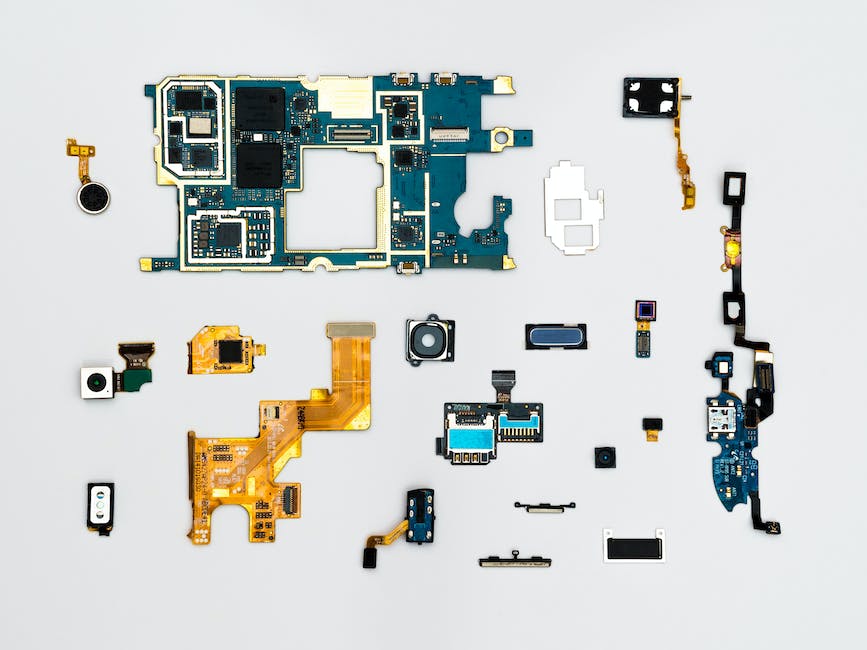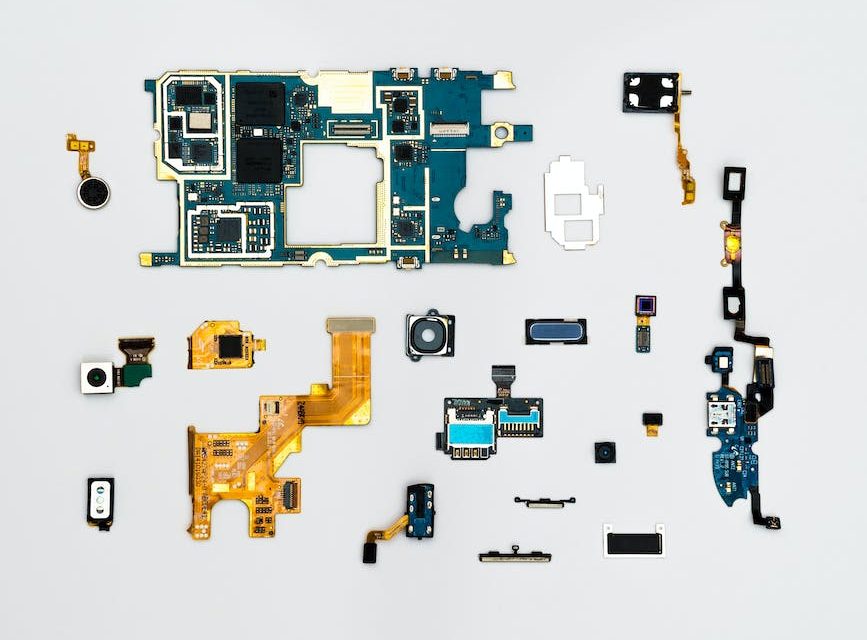Table of Contents
“Empowering Diversity, Uniting Leadership: Embracing Technology’s Impact”
Introduction
Technology has become an integral part of our lives, transforming various aspects of society, including the realm of leadership. In recent years, there has been a growing recognition of the importance of diversity and inclusion in leadership positions. This introduction will explore the influence of technology on diversity and inclusion in leadership, examining how technological advancements have both facilitated and challenged efforts to create more diverse and inclusive leadership teams.
The Role of Technology in Promoting Diversity and Inclusion in Leadership

The Role of Technology in Promoting Diversity and Inclusion in Leadership
In today’s rapidly evolving world, technology has become an integral part of our lives. It has transformed the way we communicate, work, and interact with one another. One area where technology has had a significant impact is in promoting diversity and inclusion in leadership roles. With the help of technology, organizations are now able to reach a wider pool of talent, break down barriers, and create a more inclusive and diverse leadership team.
One of the ways technology has facilitated diversity and inclusion in leadership is through the use of online platforms and social media. These platforms have provided a space for individuals from diverse backgrounds to connect, share their experiences, and build networks. Through online communities and forums, aspiring leaders can find mentors, seek advice, and gain insights into different industries. This has opened up opportunities for individuals who may have previously been excluded from traditional leadership networks.
Furthermore, technology has also enabled organizations to implement more inclusive hiring practices. With the use of artificial intelligence and machine learning algorithms, companies can now eliminate bias in the recruitment process. These algorithms can analyze resumes and job applications without being influenced by factors such as gender, race, or ethnicity. By removing human bias from the equation, organizations can ensure that candidates are evaluated solely on their skills and qualifications, leading to a more diverse and inclusive leadership team.
Another way technology has promoted diversity and inclusion in leadership is through remote work and virtual collaboration tools. With the advent of video conferencing, project management software, and cloud-based platforms, teams can now work together seamlessly regardless of their geographical location. This has allowed organizations to tap into talent from different parts of the world, breaking down barriers and creating a more diverse workforce. Remote work also provides flexibility for individuals with disabilities or caregiving responsibilities, allowing them to participate in leadership roles without the constraints of a traditional office environment.
Moreover, technology has played a crucial role in promoting diversity and inclusion in leadership by providing access to education and training. Online learning platforms and webinars have made it easier for individuals to acquire new skills and knowledge, regardless of their location or financial resources. This has empowered individuals from underrepresented groups to develop their leadership capabilities and compete on an equal footing with their peers. Additionally, technology has also facilitated the creation of virtual mentorship programs, where aspiring leaders can connect with experienced professionals who can guide and support them in their career journey.
In conclusion, technology has had a profound impact on promoting diversity and inclusion in leadership roles. Through online platforms, organizations can reach a wider pool of talent and create more inclusive networks. The use of AI algorithms in recruitment processes eliminates bias and ensures that candidates are evaluated solely on their skills and qualifications. Remote work and virtual collaboration tools have broken down geographical barriers, allowing organizations to tap into talent from different parts of the world. Lastly, technology has provided access to education and training, empowering individuals from underrepresented groups to develop their leadership capabilities. As technology continues to advance, it is crucial for organizations to leverage its potential to create a more diverse and inclusive leadership landscape.
How Technology Can Help Overcome Bias in Leadership Selection
In today’s rapidly evolving world, technology has become an integral part of our daily lives. It has transformed the way we communicate, work, and even lead. One area where technology has had a significant impact is in promoting diversity and inclusion in leadership positions. By leveraging technology, organizations can overcome bias in the selection process and ensure that leadership teams are more representative of the diverse society we live in.
One way technology can help overcome bias in leadership selection is by anonymizing the application process. Traditional selection methods often rely on resumes and cover letters, which can inadvertently introduce bias based on factors such as gender, ethnicity, or age. However, with the use of technology, organizations can implement blind hiring practices, where personal information is removed from applications, and candidates are evaluated solely based on their qualifications and skills. This approach helps to level the playing field and ensures that candidates are judged solely on their merit.
Another way technology can promote diversity and inclusion in leadership is through the use of artificial intelligence (AI) in candidate screening. AI algorithms can be trained to identify and eliminate bias in the selection process by focusing on objective criteria. For example, AI can analyze a candidate’s past performance, skills, and experience to determine their suitability for a leadership role. By removing subjective judgments, AI can help organizations identify the most qualified candidates, regardless of their background or personal characteristics.
Furthermore, technology can facilitate remote work and virtual collaboration, which can help overcome geographical barriers and increase access to leadership opportunities. In the past, physical proximity to the organization’s headquarters or main office was often a prerequisite for leadership positions. This limited the pool of potential candidates and perpetuated a lack of diversity in leadership. However, with the advent of technology, leaders can now work remotely and collaborate with teams from anywhere in the world. This opens up opportunities for individuals from diverse backgrounds and locations to contribute their unique perspectives and talents to leadership roles.
Additionally, technology can enable organizations to implement inclusive leadership development programs. Online learning platforms and virtual training sessions can provide accessible and flexible learning opportunities for aspiring leaders. These platforms can offer a wide range of resources, including courses, webinars, and mentoring programs, that cater to the specific needs and interests of individuals from diverse backgrounds. By leveraging technology, organizations can ensure that leadership development programs are inclusive and accessible to all, regardless of their location or personal circumstances.
In conclusion, technology has the power to revolutionize the way we approach diversity and inclusion in leadership. By anonymizing the application process, leveraging AI in candidate screening, facilitating remote work and virtual collaboration, and implementing inclusive leadership development programs, organizations can overcome bias and create more diverse and inclusive leadership teams. It is crucial for organizations to embrace technology as a tool for change and harness its potential to build a more equitable and representative society. By doing so, we can create a future where leadership is truly reflective of the diverse world we live in.
The Impact of Technology on Breaking Down Barriers to Leadership Opportunities
The Impact of Technology on Breaking Down Barriers to Leadership Opportunities
In today’s rapidly evolving world, technology has become an integral part of our daily lives. It has transformed the way we communicate, work, and even lead. One area where technology has had a significant impact is in breaking down barriers to leadership opportunities, particularly in terms of diversity and inclusion.
Traditionally, leadership positions have been dominated by a select few, often excluding individuals from underrepresented groups. However, with the advent of technology, these barriers are slowly being dismantled, creating a more inclusive and diverse leadership landscape.
One way technology has facilitated this change is through the rise of remote work. With the ability to work from anywhere, individuals no longer need to be physically present in a specific location to assume leadership roles. This has opened up opportunities for people who may have been previously excluded due to geographical constraints or personal circumstances. Remote work has also allowed organizations to tap into talent pools that were previously untapped, resulting in a more diverse range of leaders.
Furthermore, technology has enabled the creation of virtual communities and networks, providing individuals with a platform to connect, collaborate, and share knowledge. These online communities have become a valuable resource for aspiring leaders, particularly those from underrepresented groups, who may not have access to traditional networking opportunities. Through these virtual networks, individuals can seek mentorship, gain insights from experienced leaders, and build relationships that can propel their careers forward.
Another way technology has broken down barriers to leadership opportunities is through the use of artificial intelligence (AI) in recruitment and selection processes. AI algorithms can help eliminate bias by focusing solely on an individual’s qualifications and skills, rather than their gender, race, or other personal characteristics. This has the potential to level the playing field and ensure that leadership positions are filled based on merit rather than unconscious biases.
Moreover, technology has made it easier for organizations to track and measure diversity and inclusion efforts. Through data analytics, organizations can identify areas where they may be falling short and take proactive steps to address these gaps. This data-driven approach allows organizations to hold themselves accountable and make informed decisions to foster a more inclusive and diverse leadership culture.
However, it is important to note that technology alone is not a panacea for diversity and inclusion in leadership. While it has undoubtedly played a significant role in breaking down barriers, there are still challenges that need to be addressed. For example, the digital divide, where certain groups have limited access to technology, can perpetuate existing inequalities. Organizations must be mindful of these disparities and work towards bridging the gap to ensure equal opportunities for all.
In conclusion, technology has had a profound impact on breaking down barriers to leadership opportunities, particularly in terms of diversity and inclusion. Through remote work, virtual communities, AI in recruitment, and data analytics, technology has created a more inclusive and diverse leadership landscape. However, it is crucial to recognize that technology alone is not enough. Organizations must continue to actively address the challenges and disparities that exist to ensure equal opportunities for all individuals to assume leadership roles. By doing so, we can create a future where leadership is truly representative of the diverse world we live in.
Leveraging Technology to Foster Inclusive Leadership Practices
In today’s rapidly evolving world, technology has become an integral part of our daily lives. It has transformed the way we communicate, work, and interact with one another. With the rise of remote work and virtual collaboration, technology has also played a significant role in shaping diversity and inclusion in leadership.
One of the key ways technology has fostered inclusive leadership practices is through the facilitation of remote work. In the past, physical proximity to the workplace was a significant factor in determining who could hold leadership positions. This often created barriers for individuals who faced geographical limitations or had caregiving responsibilities. However, with the advent of technology, leaders can now work from anywhere in the world, breaking down these barriers and allowing for a more diverse pool of talent to rise to leadership positions.
Furthermore, technology has enabled virtual collaboration, which has revolutionized the way teams work together. Through video conferencing, instant messaging, and project management tools, leaders can now connect with team members from different locations and time zones. This has not only increased the diversity of perspectives within teams but has also allowed for more inclusive decision-making processes. By leveraging technology, leaders can ensure that everyone’s voice is heard, regardless of their physical location or background.
Another way technology has influenced diversity and inclusion in leadership is through the use of data analytics. With the vast amount of data available today, leaders can gain insights into their organization’s diversity and inclusion efforts. By analyzing data on employee demographics, promotion rates, and retention rates, leaders can identify areas where diversity and inclusion may be lacking and take proactive steps to address these issues. Technology has made it easier for leaders to track progress, set goals, and hold themselves accountable for creating a more inclusive workplace.
Moreover, technology has also facilitated the sharing of best practices and resources related to diversity and inclusion. Through online platforms, leaders can access a wealth of information, research, and case studies on how to create inclusive cultures and practices. This allows leaders to learn from one another and implement strategies that have been proven to be effective. Technology has democratized access to knowledge, making it easier for leaders to educate themselves and stay up to date with the latest trends and practices in diversity and inclusion.
However, it is important to acknowledge that technology is not a panacea for all diversity and inclusion challenges. While it has undoubtedly opened up new possibilities, it can also perpetuate existing biases and inequalities if not used mindfully. For example, algorithms used in recruitment processes may inadvertently discriminate against certain groups if they are trained on biased data. Therefore, it is crucial for leaders to be aware of these potential pitfalls and actively work towards mitigating them.
In conclusion, technology has had a profound impact on diversity and inclusion in leadership. It has enabled remote work, virtual collaboration, data analytics, and knowledge sharing, all of which have contributed to more inclusive leadership practices. However, it is essential for leaders to approach technology with a critical lens and ensure that it is used in a way that promotes diversity and inclusion rather than perpetuating biases. By leveraging technology mindfully, leaders can create more inclusive workplaces and drive positive change.
Q&A
1. How does technology impact diversity and inclusion in leadership?
Technology can enhance diversity and inclusion in leadership by providing opportunities for remote work, facilitating communication and collaboration across diverse teams, and enabling access to resources and information for underrepresented groups.
2. What are some potential benefits of technology in promoting diversity and inclusion in leadership?
Technology can help overcome geographical barriers, reduce unconscious biases in decision-making processes, increase representation of diverse voices, and provide platforms for marginalized groups to share their experiences and perspectives.
3. Are there any challenges or drawbacks associated with technology in relation to diversity and inclusion in leadership?
Some challenges include the potential for technology to perpetuate existing biases, create barriers for individuals with limited access to technology, and contribute to the digital divide. Additionally, reliance on technology may hinder face-to-face interactions and personal connections.
4. How can organizations leverage technology to foster diversity and inclusion in leadership?
Organizations can leverage technology by implementing inclusive hiring practices through online platforms, providing virtual training and development opportunities, using data analytics to identify and address biases, and creating online communities and forums for diverse employees to connect and share ideas.
Conclusion
In conclusion, technology has the potential to greatly impact diversity and inclusion in leadership. It can provide opportunities for underrepresented groups to access leadership positions, facilitate remote work and flexible schedules, and enable diverse perspectives to be heard and valued. However, it also poses challenges such as the digital divide and biases in algorithms. To fully harness the positive influence of technology on diversity and inclusion in leadership, it is crucial to address these challenges and ensure equitable access and representation for all individuals.





